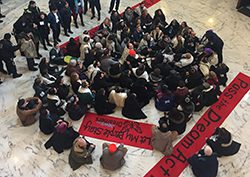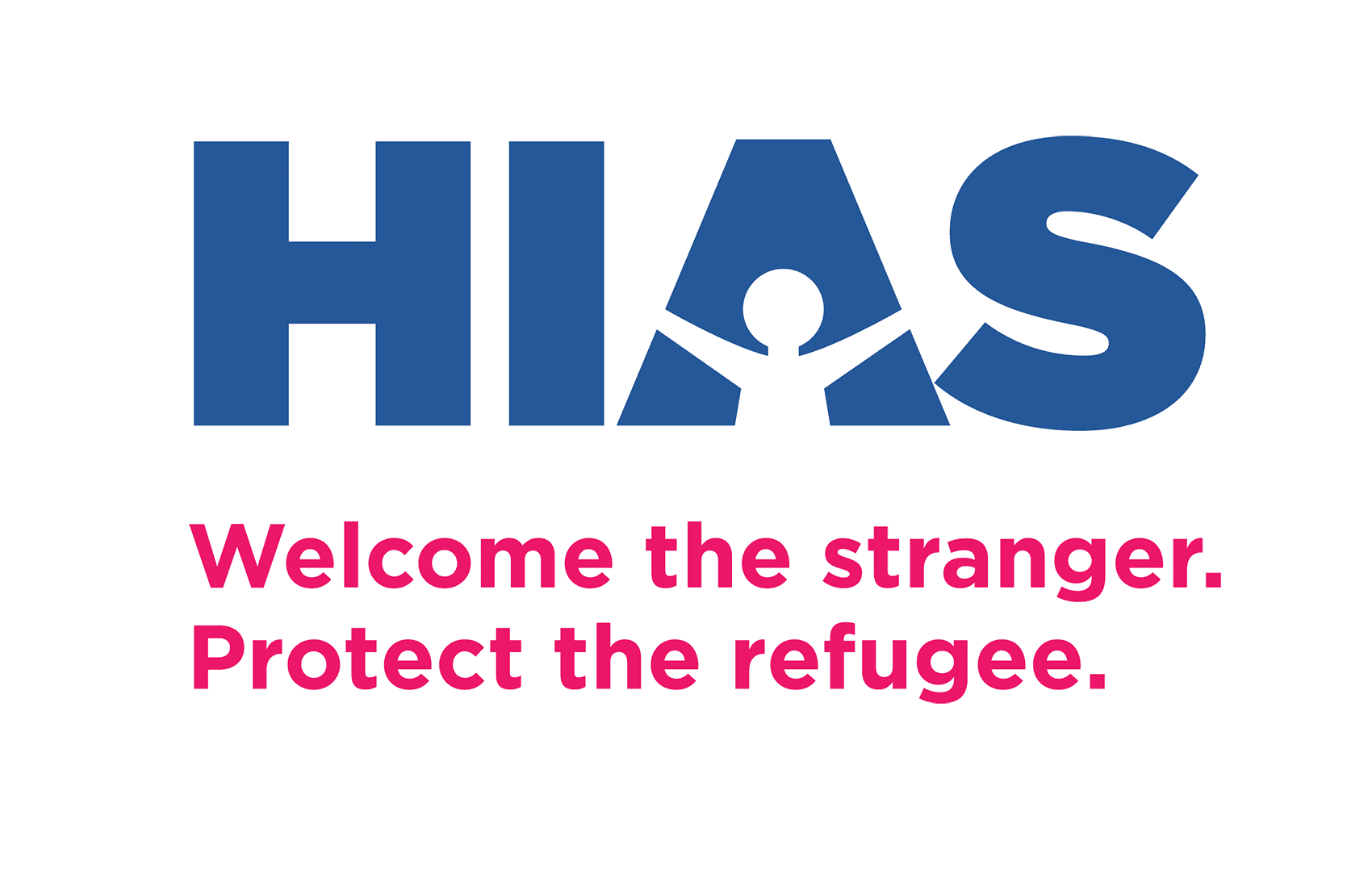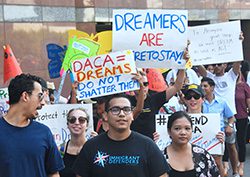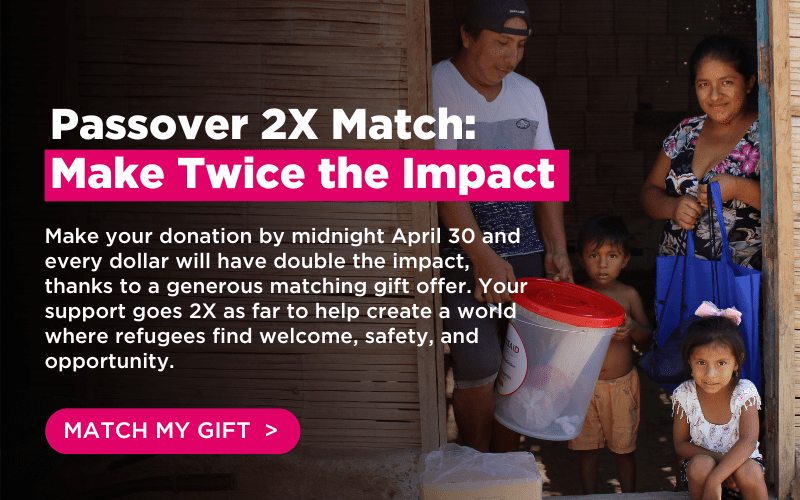Stakes are High, and Personal, in Supreme Court Immigration Case
By Eden Siskind, Refugee Policy Intern
May 25, 2016
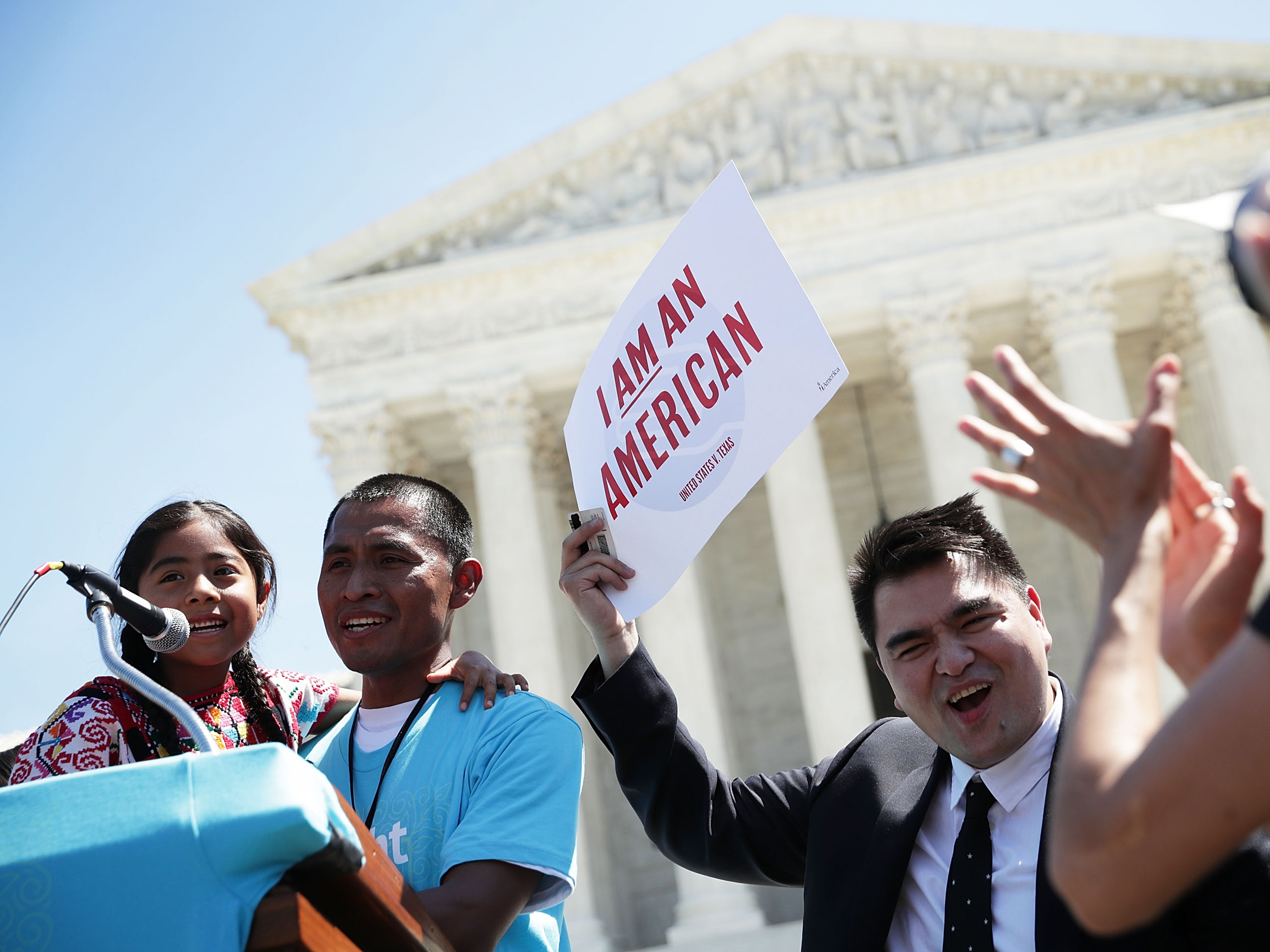
Six-year-old Sophie Cruz (L) speaks during a rally in front of the U.S. Supreme Court next to her father Raul Cruz (2nd L) and supporter Jose Antonio Vargas (R) April 18, 2016 in Washington, DC. The Supreme Court heard oral arguments in the case of United States v. Texas, which is challenging President Obama's 2014 executive actions on immigration - the Deferred Action for Children Arrivals (DACA) and Deferred Action for Parents of American and Lawful Permanent Residents (DAPA) programs.
(Alex Wong/Getty Images)
The fate of over 4 million immigrants, refugees and asylum seekers currently residing in the United States is now in the hands of the Supreme Court.
On April 19, 2016, the Supreme Court heard arguments that will determine the fate of President Obama’s 2014 executive action on immigration. That action created two programs: Deferred Action for Childhood Arrivals, or DACA, and Deferred Action for Parents of Americans (commonly referred to as DAPA).
DACA allows undocumented immigrants who arrived in the United States as children younger than 16 before June 2007 to remain in the United States, and to receive a two-year work permit. DAPA allows undocumented parents of U.S. citizens and permanent residents who have resided in the United States for at least five years to remain in the United States with their children under temporary status.
President Obama announced this executive action in November 2014 after Congress failed to pass a comprehensive immigration reform bill. Two weeks later, Texas, joined by 26 other states, filed a lawsuit in federal court challenging the executive action. After a year and a half, the Supreme Court heard the case this April. A decision is expected in June.
The outcome of this case could have a huge impact on many lives, something I’ve learned first-hand. I spent my 2014 college winter break interning at an immigration law firm, just after the executive action had been announced. I helped interview families who would be directly affected by the action. I met many immigrant and refugee families who were working hard in America while trying to simultaneously avoid separation from their children and spouses.
I clearly recall one family with three beautiful children who came to the law office to apply for DAPA. The husband and wife explained that they were both working full-time jobs as well as raising three children. Their family originally fled Central America seeking safety in the United States after their sons were told to join local gangs -- or else. One child had severe asthma and needed constant medical care from his parents. Without DAPA, both parents were facing deportation from the country and would be separated from their children.
This is just one story out of many. Vulnerable refugees and asylum seekers who have come to the United States in search of a better, safer life are now waiting to hear the Supreme Court’s decision on the legality of President Obama’s executive action.
If the Supreme Court allows the executive order to stand, families like these won’t be the only ones to benefit. The Center for American Progress estimates that under this action payroll tax revenues would increase by $21.2 billion over the next five years and $180 billion over the next ten years. By contrast, they estimate that the U.S. loses $29.9 million every day that DAPA and an expanded DACA do not move forward.
After the April 19 hearing, media reports suggested that the court appeared severely divided. Justices Sotomayor, Breyer, Ginsburg and Kagan all seemed in favor of upholding the executive action, while Chief Justice Roberts and Justices Alito, Kennedy, and Thomas posed difficult questions for the administration. It's possible that a split decision could emerge, with four justices supporting and four opposing the decision. In this scenario, the ruling from the U.S. Fifth Circuit Court of Appeals, which struck down the orders, would become the final decision.
As someone who has personally worked with families whose lives are going to be impacted by this action, I hope the decision will uphold the executive action and allow these families to stay together and achieve their goals of becoming American citizens.


